Water Membrane Treatment
With many utilities facing threat of contamination from an increasing number of sources, the need for new and better ways to treat and protect our water supplies is paramount. Membrane filtration has gained mainstream acceptance and is the preferred technology for many surface waters, for iron and manganese removal in groundwaters, and for the removal of protozoans such as cryptosporidium.
The benefits of membrane systems:
Better removal of contaminants
Smaller, absolute pore sizes offer a higher removal rating for many contaminants as compared to conventional treatment.
Higher Efficiency
Water produced/water fed ratios to the system reach as high as 99+%. This is particularly important in areas that require water conservation.
Variable filtration ratings
Systems employing differing classes of membranes ranging from microfiltration to reverse osmosis allow for precise contaminant removal at the lowest total cost. Using the right class of membrane optimizes the required membrane pressure thereby resulting in lower energy costs.
Consistent operation
Conventional technologies often require continuous adjustment of conditions via chemical addition to achieve contaminant removal. This means a high level of operator intervention and higher risk of contaminants in the finished water. Membrane systems provide automated controls to enable consistent, trouble-free operation, require far less operator attention, and provide automated alarms when attention is needed.
Environment friendly
Because membrane processes provide a physical barrier between feed water and product water, fewer chemicals are used than in traditional water treatment. Furthermore, the residual can be safely discharged or disposed in a cost-effective, environmentally safe way.
Water Processing Plants
Recently finished projects:
- Replacing or upgrading water treatment processes.
- Anticipating future regulatory compliance issues as they apply to potable water and in cooperation with SFWMD (South Florida Water Management District)and the LECWUP (Lower East Coast Water Use Plan), the District has approved the replacement of the existing lime softening treatment processes with membrane reatment. This new process will give the District the ability to deliver the highest quality drinking water available.
- Constructing a new Membrane Filter Treatment Plant which opened in October 2013.
Wastewater Processing Plants
Phase II of the ongoing Wastewater Treatment Plant expansion project has been completed. Among the items included in this 1.9 million dollar project are an upgrade and replacement of information technology system, the rehab of sewage processing plants, new wastewater digester, environmentally compliant sludge processing equipment, and a state of the art emergency generator/auxiliary power system.
The additional equipment and new facilities will give our staff the ability to treat wastewater to a degree that will assure the highest level of treatment possible and continue District compliance with environmental and regulatory rules for years into the future.
Other projects recently completed:
- Replacing and upgrading aged facilities
- Evaluation of need to drill a new monitoring well to monitor the quality of wastewater effluent injected down the deep well.
- Demolishing two wastewater treatment plants that have operated years past their life expectancy
- Building a new treatment plant designed to replace the capacity of outdated wastewater plants.
Canals and Drainage
During the past few years, the District has refurbished the two pump station structures. Some of the repairs made to each pump house include new roof, security fences, upgraded lighting, hurricane proof overhead doors, exhaust fans, lightning protection, security cameras, structure painting, etc.
The District replaced many of the pumps, motors and drives within the last 3 years. Their life expectancy is 15-20 years which make them relatively new. We are structuring an equipment replacement and funding plan to assure that funds are available in the future to meet our needs.
We are currently working on rebuilding the canal bank at 7 homes within our District. The project is expected to start in Sept. 2014 and be completed within 120 days.
The District’s Board of Supervisors is committed to public health and protecting the environment by investing in the future of Drainage, Water and Wastewater Treatment processes.
